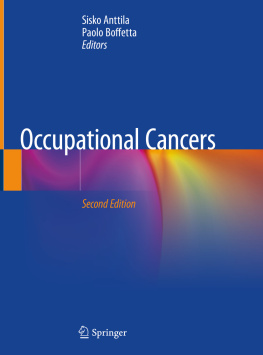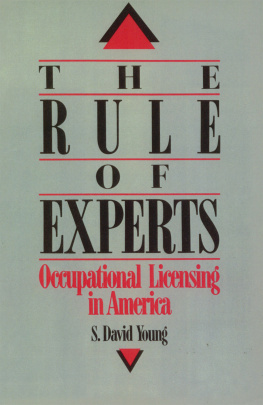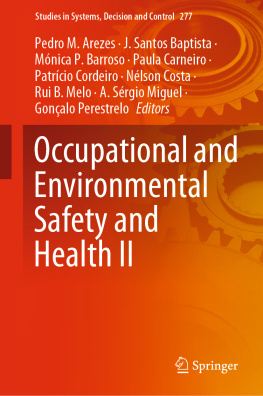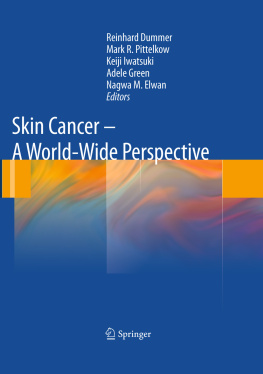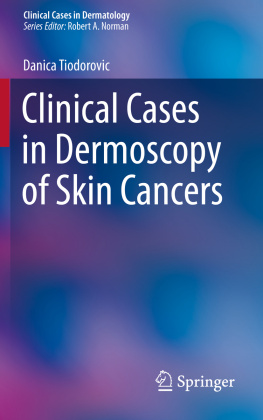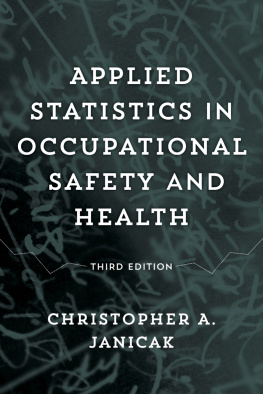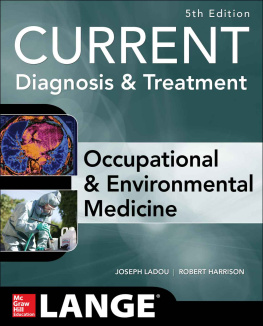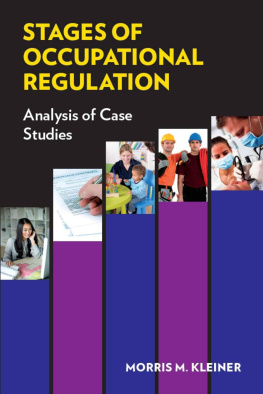Sisko Anttila - Occupational Cancers
Here you can read online Sisko Anttila - Occupational Cancers full text of the book (entire story) in english for free. Download pdf and epub, get meaning, cover and reviews about this ebook. year: 2020, publisher: Springer International Publishing, genre: Romance novel. Description of the work, (preface) as well as reviews are available. Best literature library LitArk.com created for fans of good reading and offers a wide selection of genres:
Romance novel
Science fiction
Adventure
Detective
Science
History
Home and family
Prose
Art
Politics
Computer
Non-fiction
Religion
Business
Children
Humor
Choose a favorite category and find really read worthwhile books. Enjoy immersion in the world of imagination, feel the emotions of the characters or learn something new for yourself, make an fascinating discovery.
- Book:Occupational Cancers
- Author:
- Publisher:Springer International Publishing
- Genre:
- Year:2020
- Rating:5 / 5
- Favourites:Add to favourites
- Your mark:
- 100
- 1
- 2
- 3
- 4
- 5
Occupational Cancers: summary, description and annotation
We offer to read an annotation, description, summary or preface (depends on what the author of the book "Occupational Cancers" wrote himself). If you haven't found the necessary information about the book — write in the comments, we will try to find it.
Occupational Cancers — read online for free the complete book (whole text) full work
Below is the text of the book, divided by pages. System saving the place of the last page read, allows you to conveniently read the book "Occupational Cancers" online for free, without having to search again every time where you left off. Put a bookmark, and you can go to the page where you finished reading at any time.
Font size:
Interval:
Bookmark:
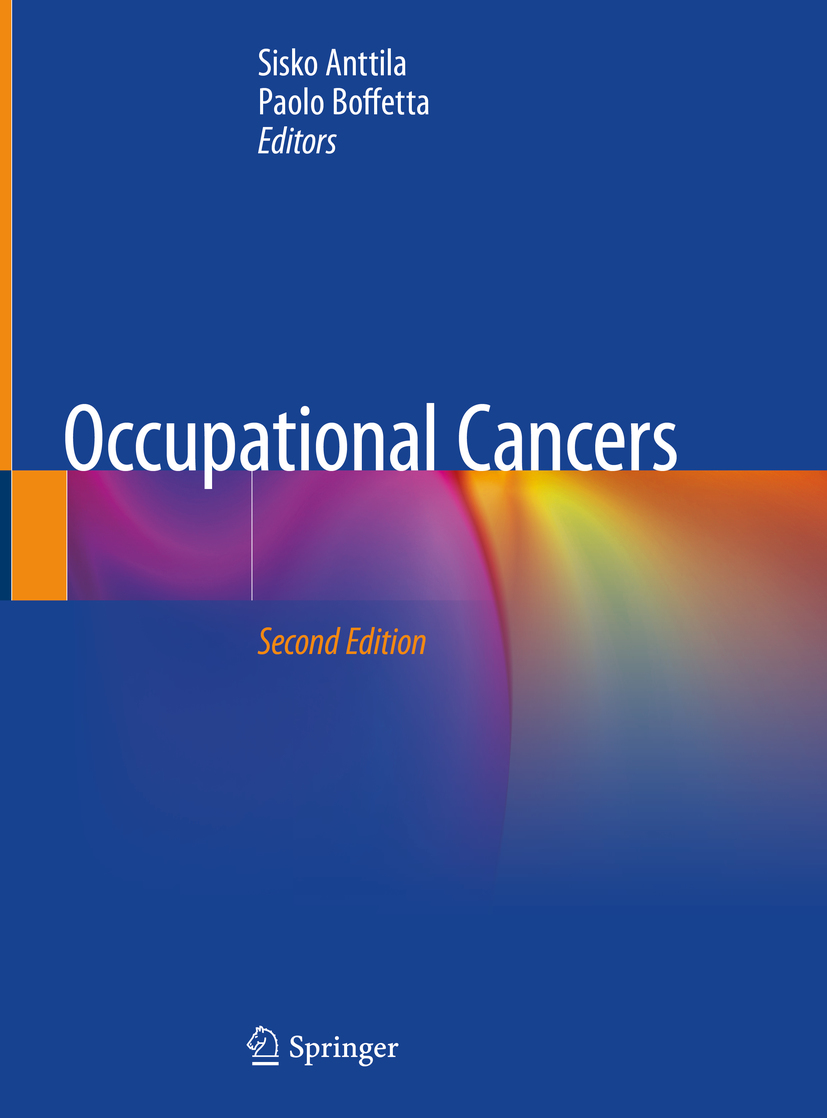

This Springer imprint is published by the registered company Springer Nature Switzerland AG
The registered company address is: Gewerbestrasse 11, 6330 Cham, Switzerland
The radical strategy for combating cancer is to identifyand when possibleeliminate, or remedy the underlying causes of human cancer. Although much of cancer is preventable, it continues to exact a huge human burden, on a global scale. Early interventions by health authorities were hampered by inadequate knowledge, but greater understanding of the areas requiring focus slowly grew in the late twentieth century. This book, edited by S. Anttila and P. Boffetta, has reached its second edition, reflecting its practical success and usefulness in describing the latest developments in the preventive science of occupational cancer control.
The twentieth century saw a revolution in public health and preventive medicine, which accelerated with scientific and medical advances during a time of unprecedented material growth as the century drew to a close. Industrial carcinogens opened the era of cancer prevention, and developments in the medical sciences, in toxicology in particular, have been fundamental to the progress in occupational cancer prevention [1]. However, it was the application of the new field of chronic disease epidemiology that fostered many of the most important advances in understanding and tackling occupational cancers [2]. Occupational cancer rose to prominence, as epidemiologists and toxicologists identified increasing numbers of suspect human carcinogens, and public anxiety was spurred by revelations of the toxicity of asbestos and by the disastrous global legacy of the asbestos industry [3, 4]. The inertia of some industries, not least of the tobacco industry, to accept the obtained scientific results and to adopt costly controls to protect workers or consumers (in the case of tobacco) was not new [5]. The uncertainties inherent in epidemiological and toxicological studies were too often cited as justification for delaying or concealing, rather than incorporating the lessons of research, as the asbestos saga, or the global tobacco epidemic, have sadly shown.
Worldwide, there are more than 100,000 asbestos-related deaths every year, and in high-income countries, the compensation for asbestos-related diseases is likely to reach several hundred billion euros over the coming years [6]. All forms of asbestos are recognized as carcinogenic, and to date, more than 50 countries, including all the Member States of the European Union, have banned or restricted the use of asbestos. However, chrysotile asbestos continues to be mined and exported to developing countries by, for example, China and Russia, and India is the largest importer. Brazil also has mines. The World Health Organization and the International Labour Organization have both called for an international ban of use of all asbestos.
Even though the health hazards of old scourges, such as asbestos and silica dusts, are well understood, they remain significant causes of occupational cancer. By the 1970s, the traditional industries were already in decline in the western world, while the chemical industry had been expanding rapidly since the Second World War. One chemical in particular, vinyl chloride monomer (VCM), used in many countries in plastics production, was assumed to be safe. However, evidence from laboratory animals revealed in 1973 that it could cause angiosarcoma of the liver, a rare tumor, in humans. Soon, it was revealed that VCM workers in many countries had developed this type of tumor [7]. This then resulted in rapid actions to reduce exposure to VCM in chemical plants.
During the latter part of the twentieth century, it became clear that carcinogenesis was a multistep process. The milestones in the complexities of the neoplastic disease include sustaining proliferative signaling, evading growth suppressors, resisting cell death, enabling replicative immortality, including angiogenesis, and activating invasion and metastasis [8]. The role of so-called molecular epidemiology in the study of cancer etiology and prevention is on the rise.
At the close of the twentieth century, many predicted that we were entering a period of precision prevention, as a consequence of the sequencing of the human genome [9]. Linking genomics knowledge into prevention gave hope to inaugurate a new era with unforeseen possibilities for cancer screening and for detection of early warning signs.
There are currently many international initiatives addressing occupational, environmental, and consumer issues in relation to the control of toxic and potentially carcinogenic substances. Improved control technologies and the adoption of risk assessment and risk management legislation have radically altered attitudes and led to far better control of exposure to chemicals, mixtures of chemicals, and physical agents, such as ionizing and nonionizing radiation [10, 11].
However, newer concerns over cancer have arisen with the rapid introduction of technologies such as mobile phones, the use of which became widespread before studies of their potential health hazards were embarked upon [1, 12]. Todays wide interest in developing engineered nanomaterial-based products has also been cautioned by the previous lessons learnt from asbestos fibers [13, 14].
In the face of the new findings of our present as a moment when all is in flux, when molecularization of biomedicine is giving us new tools to discover the molecular secrets of the cancer process, we need to confess that the actual progress in precision prevention of occupational cancer has remained meagre. Regardless of this pessimism, however, the challenges facing the modern world cannot be met without the creation of new technologies. Some of these technologies will inevitably have adverse health consequences, a small proportion of which may be unforeseen under current regulatory approaches, but the fact remains that many of these new technologies have the potential to enormously improve lives.
Font size:
Interval:
Bookmark:
Similar books «Occupational Cancers»
Look at similar books to Occupational Cancers. We have selected literature similar in name and meaning in the hope of providing readers with more options to find new, interesting, not yet read works.
Discussion, reviews of the book Occupational Cancers and just readers' own opinions. Leave your comments, write what you think about the work, its meaning or the main characters. Specify what exactly you liked and what you didn't like, and why you think so.

